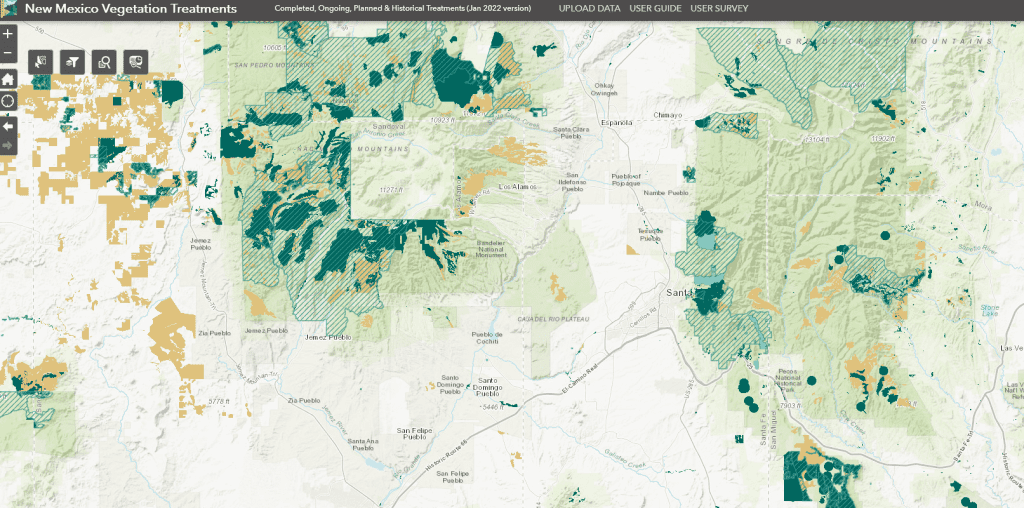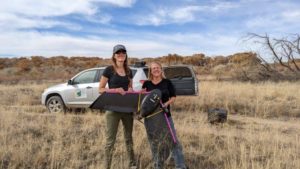
I heard a rumor that CFRI hadn’t asked for this funding in the Infrastructure Bill. Anyone who knows the backstory, please let us know. Personally, I like the fact that the money didn’t get apportioned via panels of scientists, nor go to the Usual Coastal University Suspects. One person’s pork is another person’s equity and justice, and all that. It makes sense to me that universities in dry forests are better positioned to study the problem, which is to a large degree, fires in… dry forest types.
Here are some excerpts from the CSU press release
In an effort to improve forest resilience and reduce the risk of catastrophic wildfires in the Interior West, three organizations, including Colorado State University’s Colorado Forest Restoration Institute, are receiving $20 million from the U.S. government.
The funds are part of the Infrastructure Investment and Jobs Act passed by Congress with bipartisan support and signed by President Joe Biden in 2021, which will go to enhancing key systems and processes to mitigate the impact of forest fires.
The award will be made to the Southwest Ecological Restoration Institutes, which includes the Colorado Forest Restoration Institute as well as Highlands University’s New Mexico Forest and Watershed Restoration Institute and Northern Arizona University’s Ecological Restoration Institute. The Southwest Ecological Restoration Institutes were created through congressional legislation passed in 2004 and charged the three institutes with promoting adaptive management practices to restore the health of fire-adapted forest and woodland ecosystems of the Interior West.
……………..
The three institutes will work collaboratively on three key components with the funding. They will develop a national database of existing data on fuel treatments and wildfires, work with managers, planners, and policymakers to facilitate use and applications of the data, and research outcomes of forest management and wildfires to learn what works.
“The work we’re charged with developing under the Infrastructure measure will create opportunities for land and fire managers, scientists and community stakeholders to co-produce actionable knowledge to lessen the harmful effects of wildfire events to people and the environment,” said Tony Cheng, director of the Colorado Forest Restoration Institute and professor in the Department of Forest and Rangeland Stewardship.
……
“When land and fire managers, scientists and stakeholders work together to craft and apply science-based solutions, we can better realize this goal.”
Here’s an interview with the New Mexico Highlands folks
Barton said SWERI will receive the funding over five years and he anticipates that they’ll begin building the national database by starting in the Southwest and expanding out from there.
“The hardest part of this is just identifying all the treatments and keeping up with all the new treatments,” said Barton. “Part of what we need to do is figure out how much of what we’ve done in New Mexico is going to be relevant to what people need elsewhere, and then find local partners who can keep that going.”
Katie Withnall and Patricia Dappen, GIS specialists with the New Mexico Forest and Watershed Restoration Institute, have mapped more than 50,000 vegetation treatment projects in New Mexico.
Withnall said several other states already have some form of a treatment database, though to her knowledge none are as comprehensive as New Mexico’s.
“There are a couple of national databases, but they are not nearly as complete and don’t have the same scope,” said Withnall. “We do need to see what else is out there though so we’re not reinventing the wheel.”
And here’s a link to an interview with Andrew Sánchez Meador of Northern Arizona University’s Ecological Restoration Institute.
It’s a national effort, you’ll be looking at all different types of forests, right?
Yeah, a national effort, all types of forests. We anticipate that the things we do in the Southwest as SWERIs may not work everywhere. We may have to engage entities in Florida or Alaska that we don’t normally engage in Arizona, New Mexico, and Colorado. There’s a component in the beginning of this project that’s going to have to be around scoping, and ensuring that we have the right people at the table, and ensuring that this data product that will be put together and the outcomes from it will be useful for the largest group possible.
